Inside India’s contemporary art scene
Emerging and established artists are bringing the spotlight to India, where Aastha D attended the recent India Art Fair
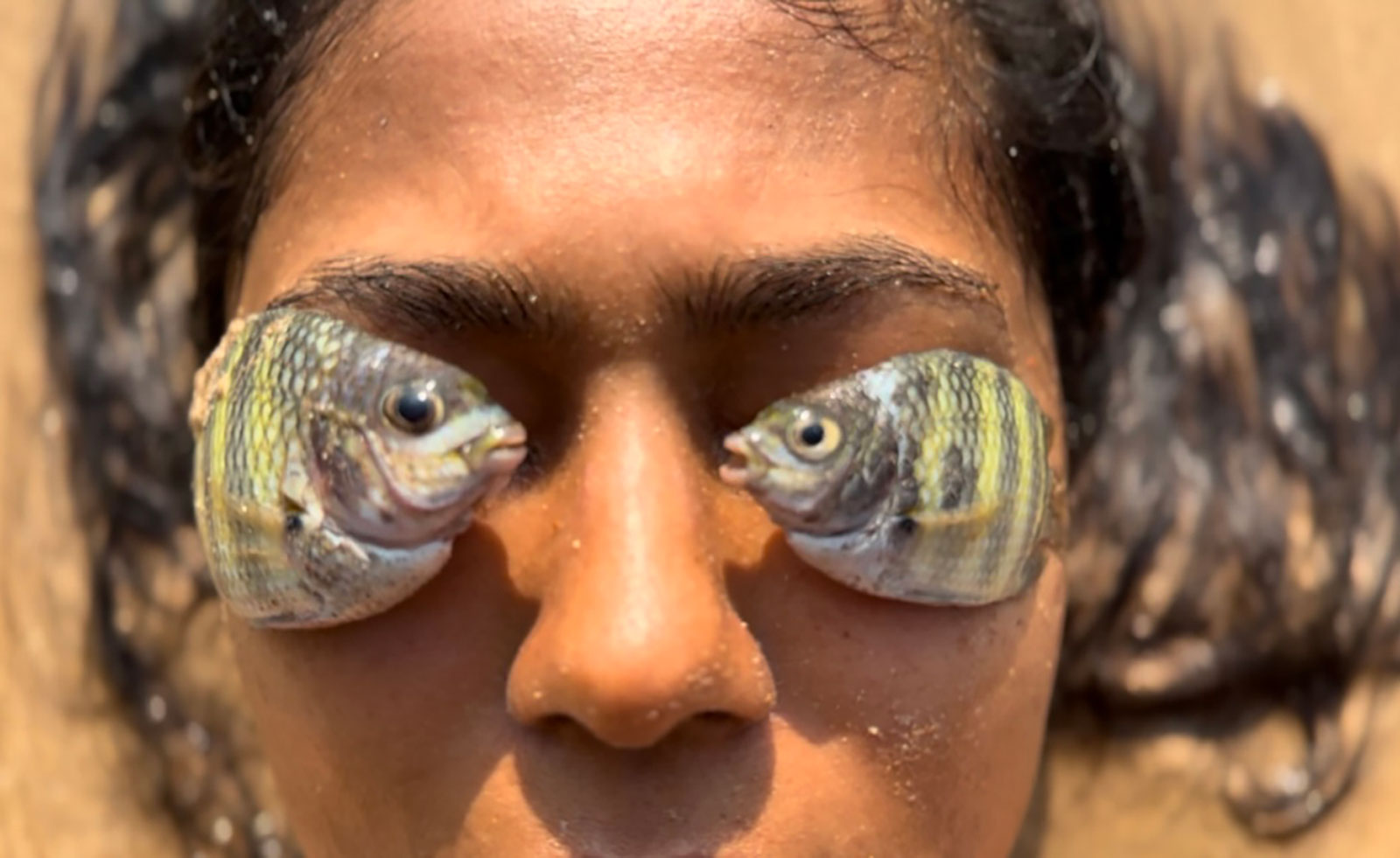
To perceive depth, a shadow must be cast. To cast a shadow, light must be obstructed. And to obstruct light, an object must resist – holding onto opacity, refusing to dissolve under a glare. The white cube, designed to absorb as little resistance as possible, perpetuates a lie: a deceptive tabula rasa. Its sterile walls strip art of context, pretending neutrality while enforcing erasure.
This was apparent at the recent India Art Fair 2025 at the NSIC grounds in New Delhi, which offered an array of these white cubes, where 120 exhibitors transformed their enclosed grids into storefronts-disguised-as-galleries. A newly introduced design section featured 11 studios, but rather than reimagining the fair’s rigid structure, they were positioned outside the main grid – tasked with punctuating the space with pavilions, furniture, and interactive installations. Claire Fontaine’s Foreigners Everywhere interrogated belonging through LED text, while Asim Waqif’s repurposed cement truck invited chaotic, noisy play. Vikram Goyal’s Garden of Life showcased intergenerational metalworking techniques – repoussé, pietra dura, hollowed joinery – rendered in brass, unfolding themes of mythology and magical realism. Meanwhile, Max Estates and Studio Lotus’s The Dichotomy of Delhi housed performances by Crow, exhibited works by XXL Collective, and served chai, becoming a focal point for conversation.
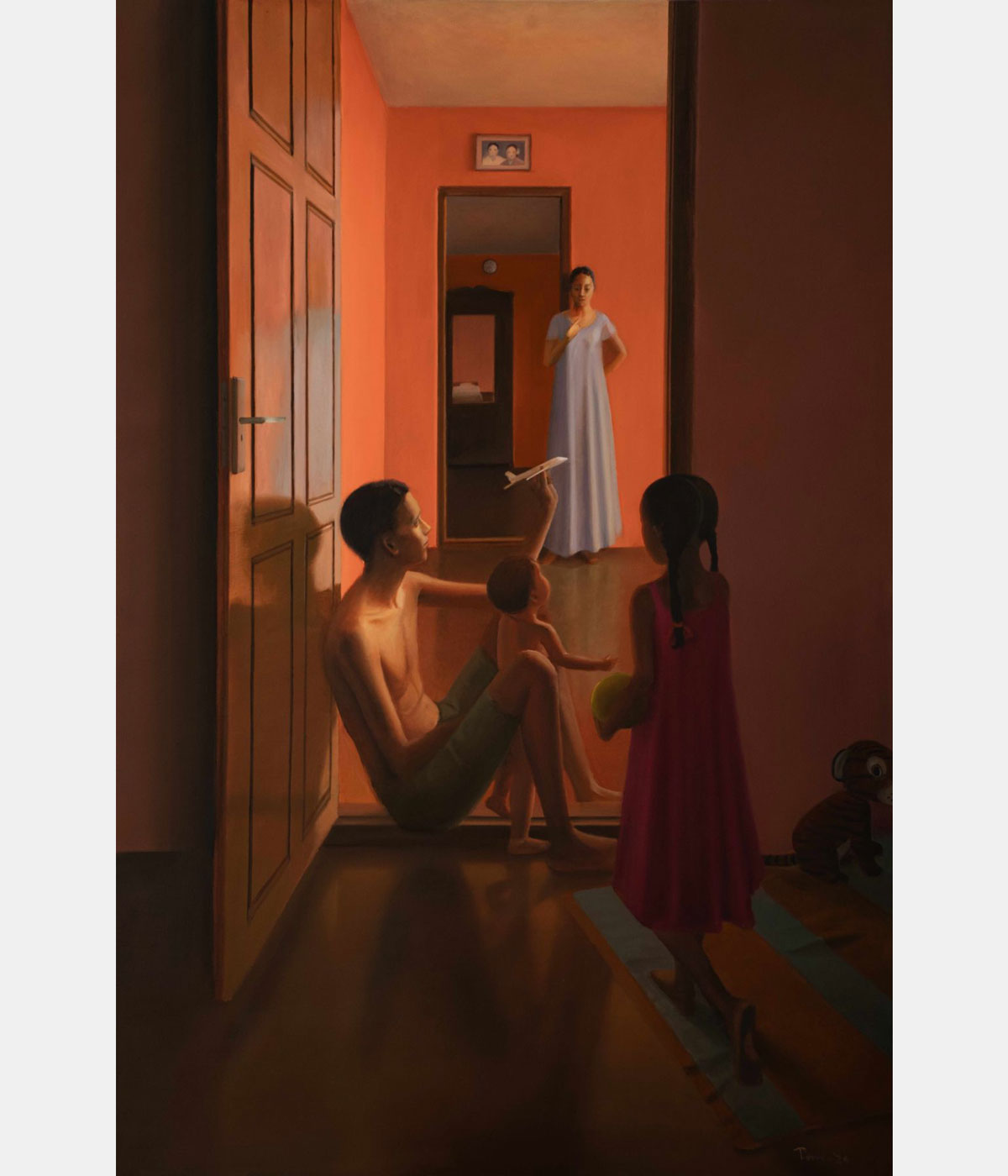
Aicon Contemporary, Flight
The fair’s three-day run saw significant international engagement. Thirteen global galleries presented leading South Asian and diaspora artists alongside contemporary heavyweights. Huma Bhabha’s visceral sculptures found their place at David Zwirner, while Anish Kapoor’s signature formed-voids stretched across Galleria Continua and Lisson Gallery. Aicon featured Khadim Ali’s intricate mythopoetics and Affan Baghpati’s subversive play with material culture. Subodh Gupta’s gleaming utensils – divorced from their domesticity as always – stood pristine on pedestals, untouched by the hands that cook, feed, and nourish the subcontinent in kitchens across regional, caste, class, and generational divides. The fair’s roster extended beyond regional geographies, with dissenter Ai Weiwei (Galleria Continua), Marina Abramović and Shirazeh Houshiary (both Lisson Gallery), and Ugo Rondinone (Galerie Geek Art) complicating dialogues on displacement, borders, and governance.
Beyond the fair’s walls, Delhi’s political landscape shifted. On its penultimate day, election results brought the far-right Bharatiya Janata Party (BJP) to power in the capital for the first time in 29 years, unseating the centrist Aam Aadmi Party (AAP). The rising tide of Hindutva nationalism had already cast its shadow over the art world – evidenced by the recent police seizure of MF Husain’s works from DAG, following a complaint by a BJP-aligned citizen citing ‘hurt religious sentiments’.
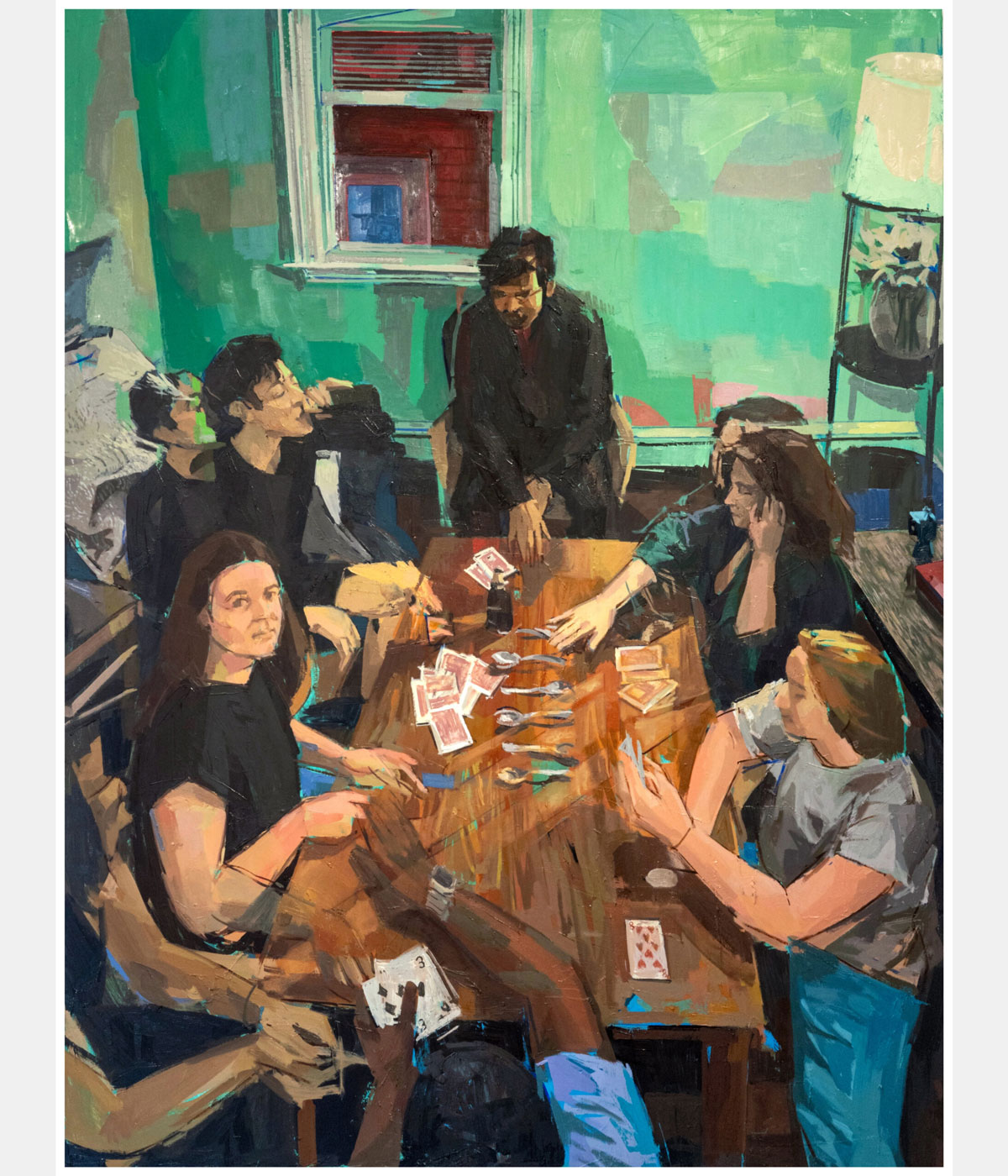
Ricky Vasan, The Game, 2024. Courtesy the artist and Galerie ISA
Amid these tensions, the Young Collector’s Program, in its seventh edition, connected emerging and established artists with a fraction of India’s 1.65 million high-net-worth individuals. Leading collector Kiran Nadar acquired works across galleries, expanding her public-access contemporary art collection. Her philanthropy includes the Rajiv Gandhi Foundation, which supports young Muslim girls’ education in Uttar Pradesh. Represented by Rukhshaan Art, Ajay Dhapa’s miniaturist storytelling on carpet engulfed viewers in its beauty, detail, and poetic socio-political commentary. Equally compelling was Vikrant Bhise’s anti-caste memory archive (Experimenter) and Madhukar Mucharla’s stitched leather mastery (Galleryske), challenging caste-purity through material and identity, affirming dignity and pride in the history of anti-caste movement.
The fair’s Growing Focus programming, curated by Shaleen Wadhwana and supported by JSW, sought to foreground critical conversations. Talks tackled market structures, institutional models, philanthropy, infrastructure, and pedagogy. The line-up spanned museum leaders, critics, academics, and emerging voices –including Tasneem Zakaria Mehta (Dr Bhau Daji Lad Museum), Sangita Jindal (Art India, JSW Foundation), Manuel Rabaté (Louvre Abu Dhabi), Anurag Minus Verma (writer and cultural critic), Professor Sarover Zaidi (anthropologist and philosopher), artists Karnika Bai (Aravani Art Project), Ram Singh Urveti, Thukral & Tagra, Sagarika Sundaram, Vikrant Bhise, and curators such as Tarini Malik (Royal Academy of Arts, London).
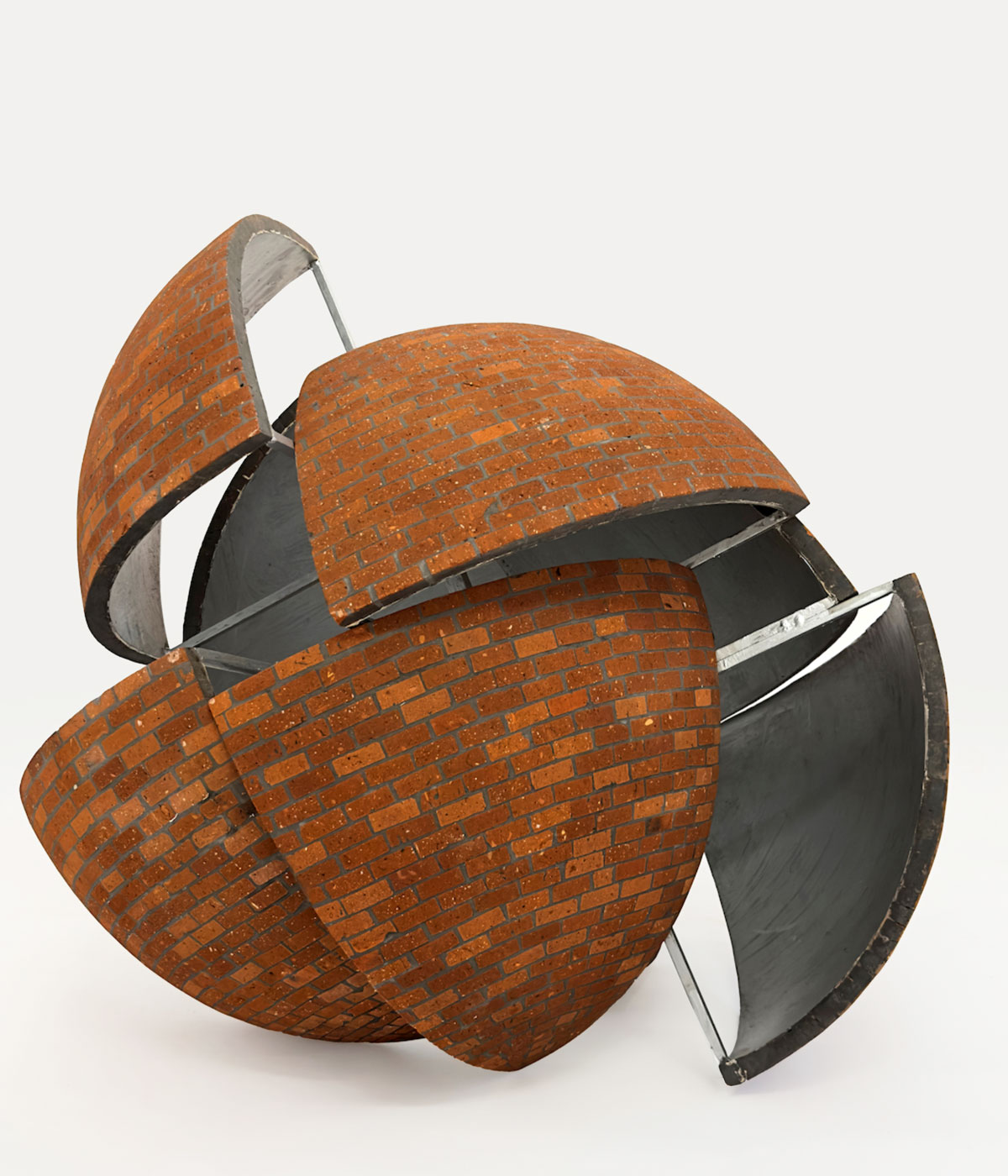
Teja Gavankar, Khora, 2023. Courtesy of the artist and Sakshi Gallery
The human eye is designed to adapt; for it to examine what is illuminated it must work in tandem with the surroundings, light, movement, sound, smell et al. Art, too, exists in relation – to walls, viewers, time, and the state. At the fair, relentless stimuli and a rigid grid induced fatigue, offering no reprieve for body or mind. The harsh lighting erased depth, reducing works to commodities, their intent clear: commerce over contemplation. As Gautam Bhatia aptly noted, ‘The IAF needs to break out of its elitist bubble.’
Wallpaper* Newsletter
Receive our daily digest of inspiration, escapism and design stories from around the world direct to your inbox.
Yet, it is rare for the public to witness, within a single space, an FN Souza, SH Raza, Paul Klee, Huma Bhabha, and Oscar Murillo alongside India’s indigenous and traditional art practices. The India Art Fair attempted to hold space – for spectacle, for dialogue, for aspiration, for criticism, for delight, for opacity amid the glare. And in fleeting moments – between the grid, the commerce, and the exhaustion – it did.
The India Art Fair 2025 took place 6-9 February 2025. Also see our design highlights from the fair
Aastha D. (she/they) is an independent scholar, essayist, and educator. They have degrees in architecture and its critical, curatorial, and conceptual practices. She founded the magazine Proseterity, and is also managing editor of the working group Insurgent Domesticities at the Center for the Study of Social Difference (CSSD) of Columbia University
-
 The new Google Pixel 9a is a competent companion on the pathway to the world of AI
The new Google Pixel 9a is a competent companion on the pathway to the world of AIGoogle’s reputation for effective and efficient hardware is bolstered by the introduction of the new Pixel 9a, a mid-tier smartphone designed to endure
By Jonathan Bell Published
-
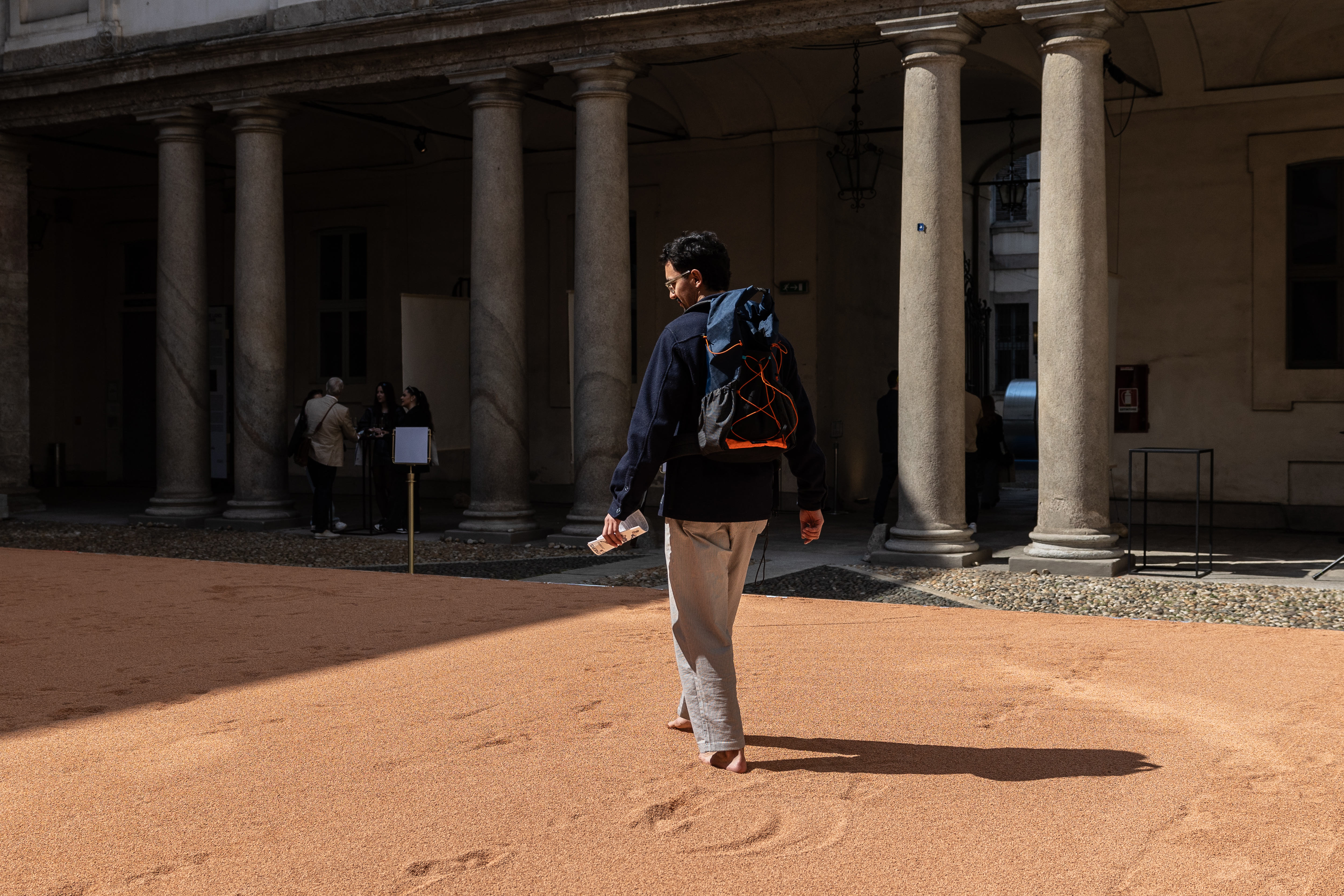 In Milan, MoscaPartners presents a poetic exploration of ‘migration’
In Milan, MoscaPartners presents a poetic exploration of ‘migration’Alongside immersive work by Byoung Cho, MoscaPartners’ Milan Design Week 2025 display features an accessible exhibition path designed for visually impaired visitors
By Cristina Kiran Piotti Published
-
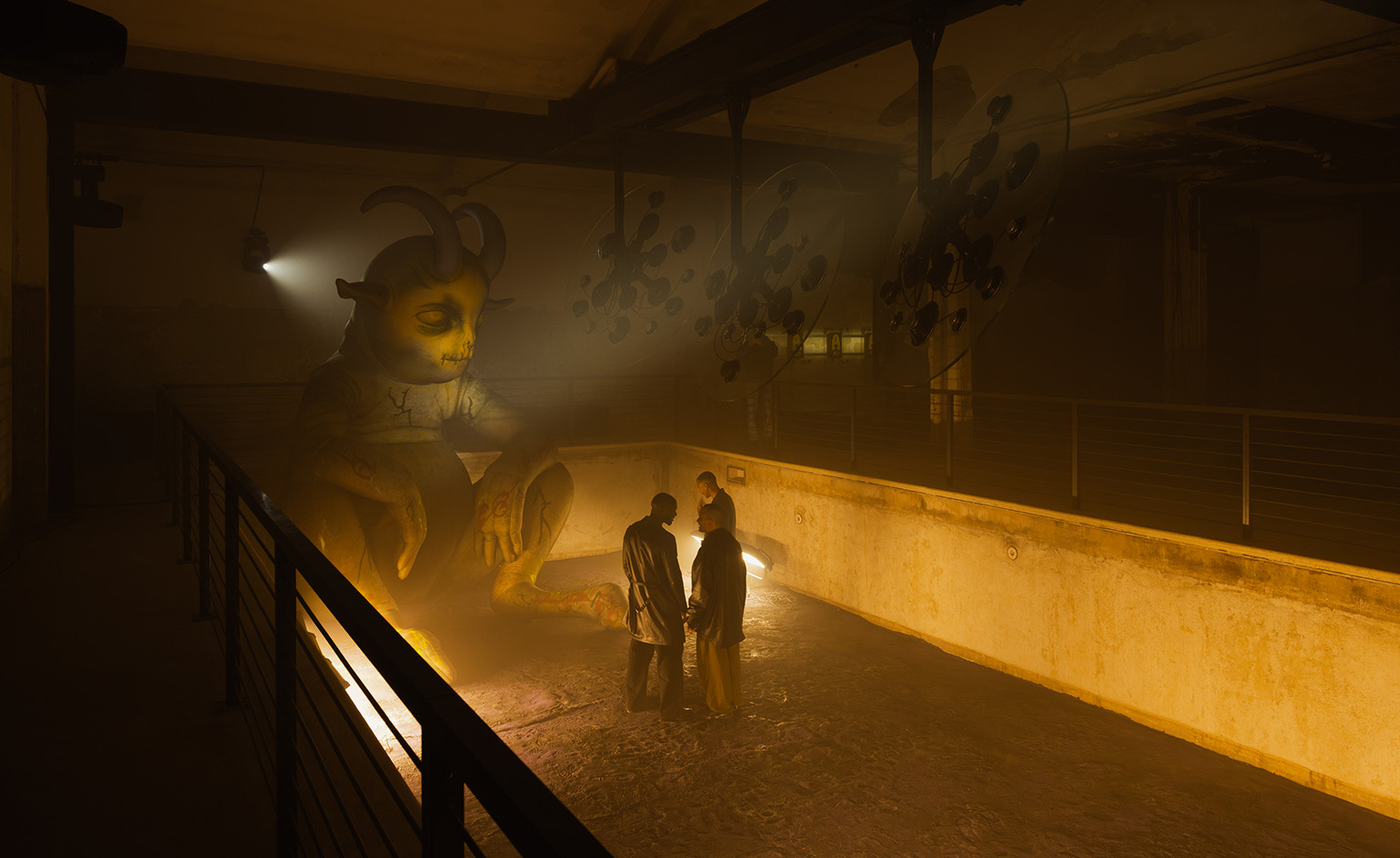 The making of PAN and Nike’s euphoric, club-inspired collaboration at Milan Design Week
The making of PAN and Nike’s euphoric, club-inspired collaboration at Milan Design WeekAlongside a new Air Max 180 release, ‘The Suspended Hour’ display sees Berlin record label PAN imagine the unfolding of a club night, from dusk until dawn
By Craig McLean Published
-
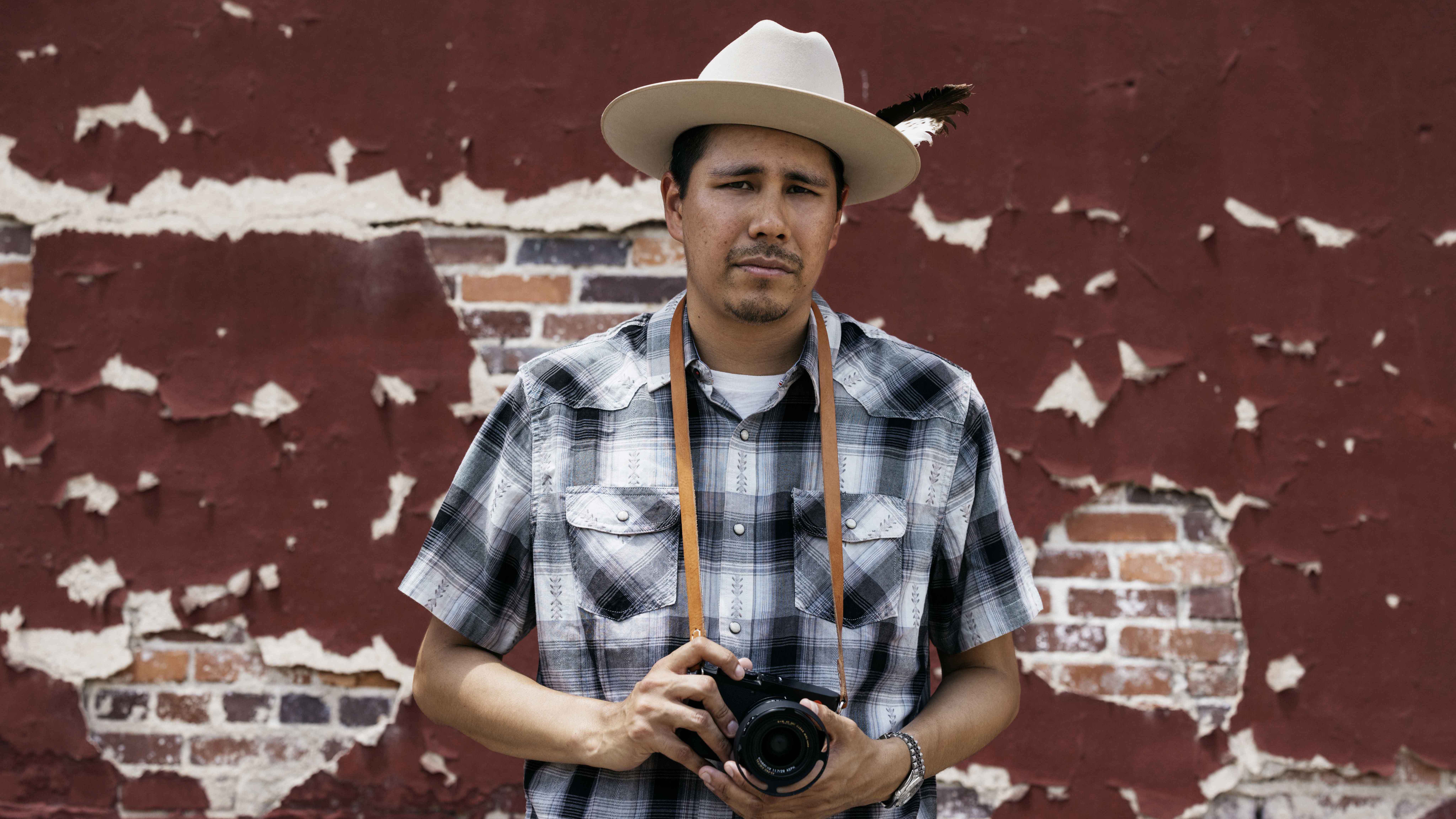 Kyle Bell's films are an expression of the indigenous experience in America
Kyle Bell's films are an expression of the indigenous experience in AmericaKyle Bell, who was mentored by Spike Lee as part of Rolex's Mentors and the Protégés programme, is a self-taught video maker from Tulsa, Oklahoma
By Rosa Bertoli Published
-
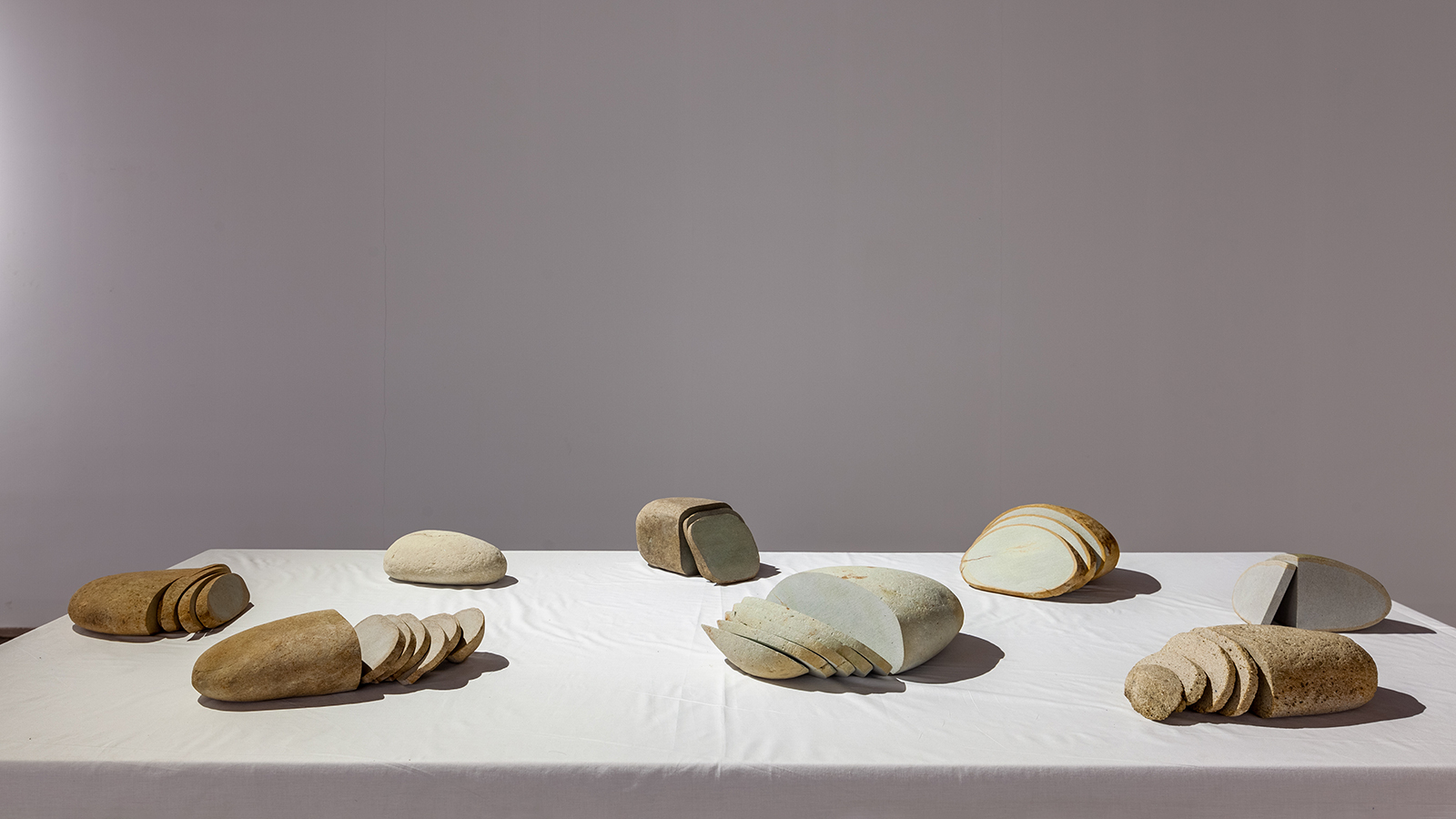 ‘In Our Veins Flow Ink and Fire’: a fervent return for India’s Kochi-Muziris Biennale
‘In Our Veins Flow Ink and Fire’: a fervent return for India’s Kochi-Muziris BiennaleIn its fifth edition, the postponed Kochi-Muziris Biennale surpasses the intersectional, collaborative essence of previous editions, writes Aastha D
By Aastha D Published
-
 Bharti Kher escapes to Somerset in search of solitude
Bharti Kher escapes to Somerset in search of solitudeThe New Delhi-based artist presents an exhibition of new installation, painting and sculpture work following her 2017 residency at Hauser & Wirth Somerset
By Harriet Lloyd-Smith Published
-
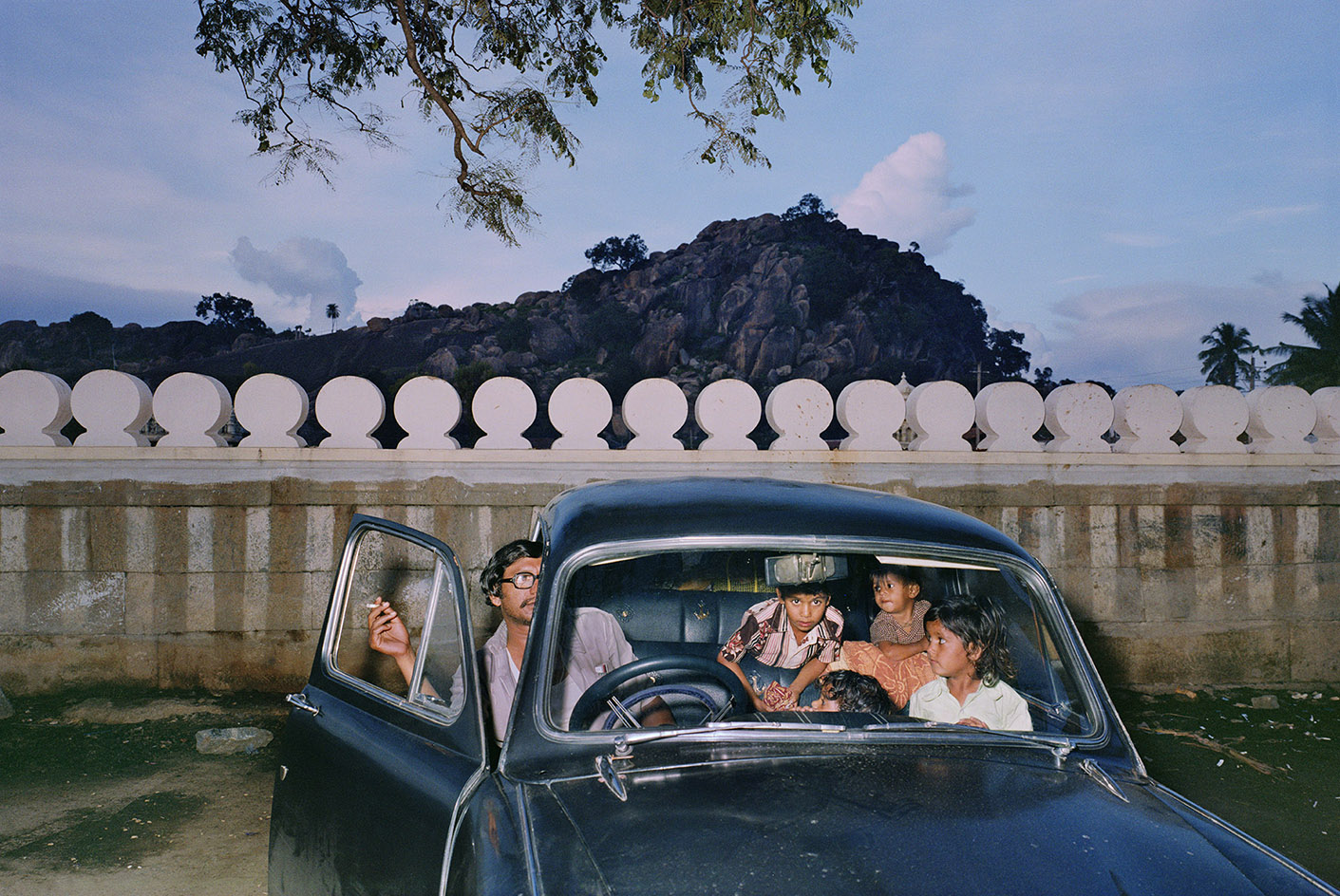 The Science Museum celebrates India’s scientific and cultural fabric with two illuminating shows
The Science Museum celebrates India’s scientific and cultural fabric with two illuminating showsBy Charlotte Jansen Last updated
-
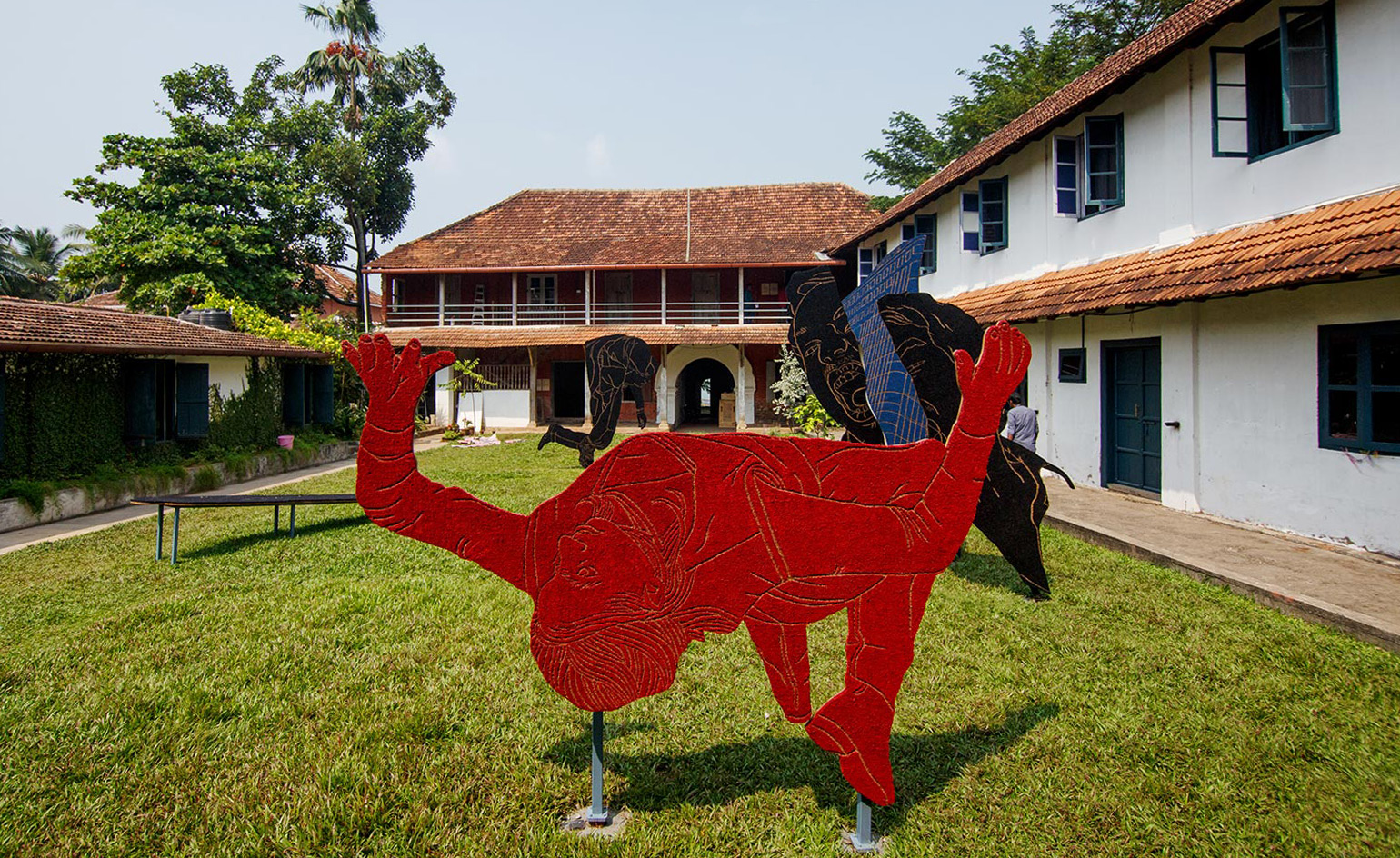 A colonial warehouse in Kerala hosts the third Kochi-Muziris Biennale
A colonial warehouse in Kerala hosts the third Kochi-Muziris BiennaleBy Emma O'Kelly Last updated
-
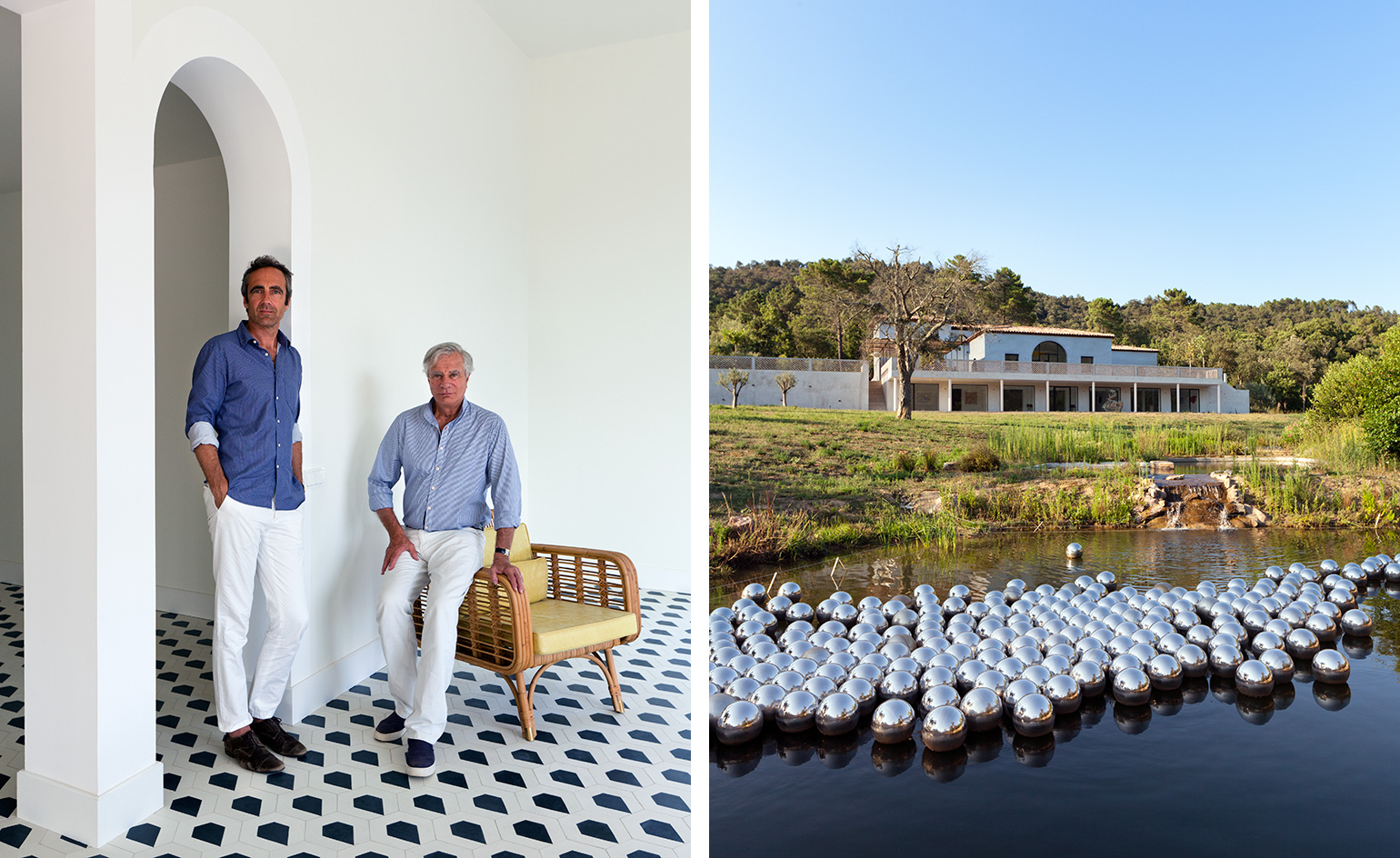 Special argent: a silvered family house holds its own at French sculpture park Domaine du Muy
Special argent: a silvered family house holds its own at French sculpture park Domaine du MuyBy Natalia Rachlin Last updated
-
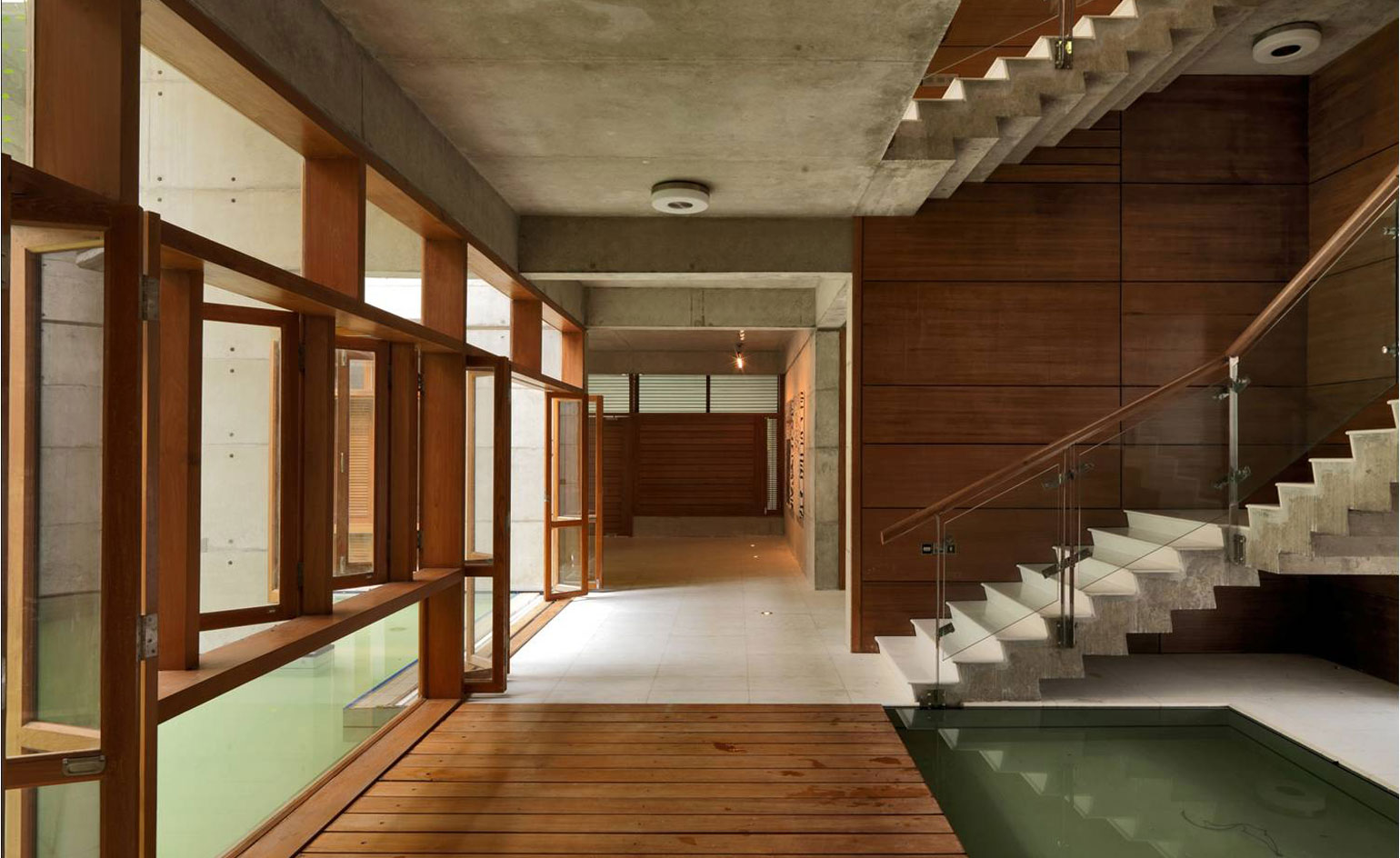 A legacy of Bangladeshi architecture on show at the Dhaka Art Summit
A legacy of Bangladeshi architecture on show at the Dhaka Art SummitBy Nick Compton Last updated
-
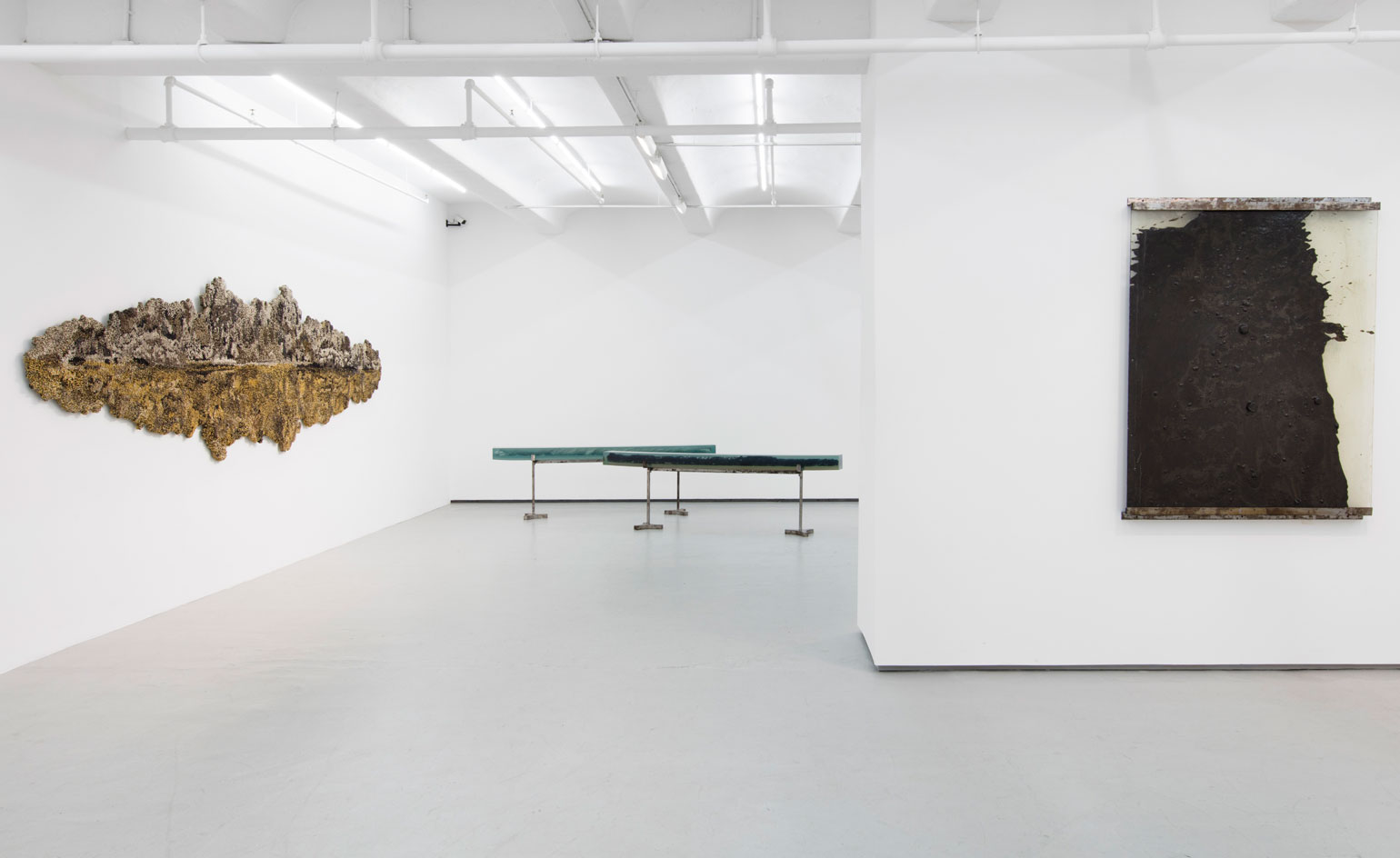 Eco conscience: Vibha Galhotra’s creations comment on New Delhi pollution
Eco conscience: Vibha Galhotra’s creations comment on New Delhi pollutionBy Brook Mason Last updated